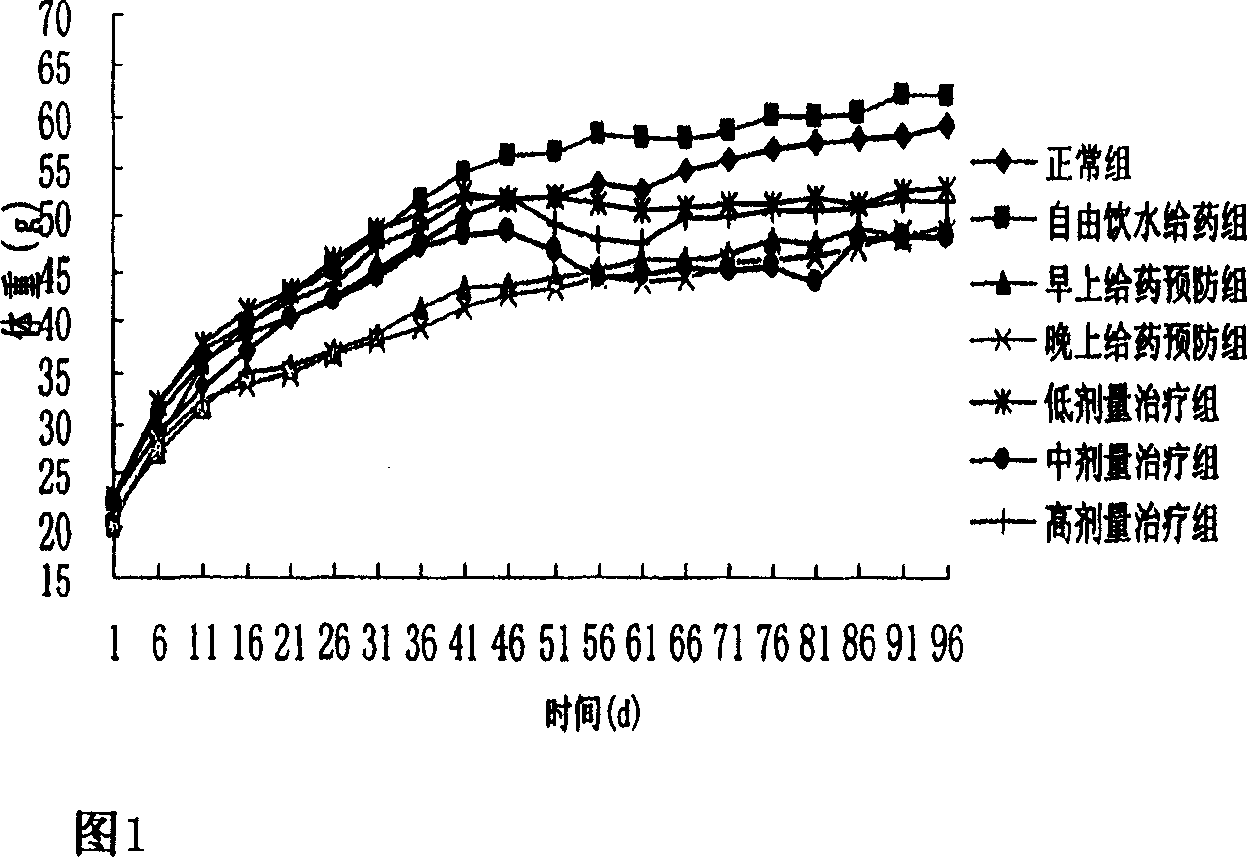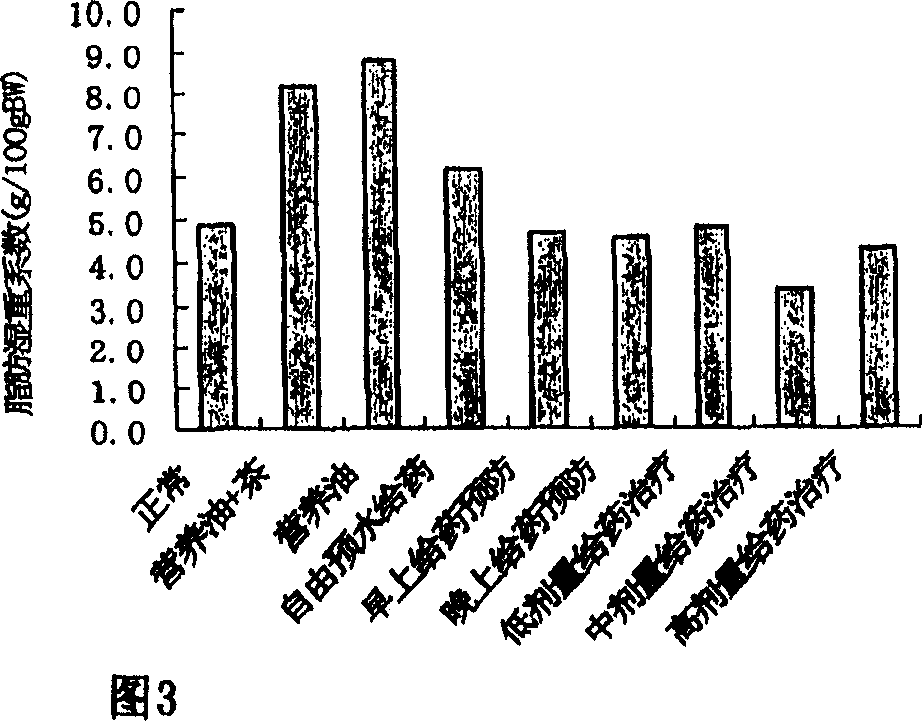Theapolyphenol composition and its preparation
A composition and technology of tea polyphenols, applied in the field of tea polyphenol composition and preparation thereof, can solve the problems of life danger, excitement, irritability, nausea, headache, insomnia and the like
- Summary
- Abstract
- Description
- Claims
- Application Information
AI Technical Summary
Problems solved by technology
Method used
Image
Examples
Embodiment 1
[0051] Embodiment 1: Composition containing 90% tea polyphenol extract
[0052] The composition contains (percentage by weight) 90% of tea polyphenol extract, 7.5% of microcrystalline cellulose, 1.5% of magnesium stearate and 1% of sodium carboxymethyl cellulose. Among them, microcrystalline cellulose is also used as a binder and a disintegrating agent, and sodium carboxymethyl cellulose is a hygroscopic agent, which can chelate trace metal elements brought in during granulation and tabletting, and prevent metal elements from catalyzing tea polyphenols. Oxidation.
[0053] The dry granulation and tabletting process is adopted, and the lubricant is added twice during briquetting and tabletting. Pass the tea polyphenol extract and various auxiliary materials through an 80-mesh sieve, add the materials except magnesium stearate in order from less to more according to the equal volume incremental mixing method, and then add magnesium stearate and mix evenly. Press the above-ment...
Embodiment 2
[0058] Embodiment 2: Composition containing 73% tea polyphenol extract
[0059] The composition contains (percentage by weight) 73% of tea polyphenol extract, 25% of microcrystalline cellulose, 1% of magnesium stearate and 1% of sodium carboxymethyl cellulose. Among them, microcrystalline cellulose is also used as a binder and a disintegrating agent, pregelatinized starch is also used as a binder and a filler, and sodium carboxymethyl cellulose is a hygroscopic agent, and can be chelated in the process of granulation and tableting. The added trace metal elements prevent metal elements from catalyzing the oxidation of tea polyphenols.
[0060] Using powder direct compression technology,. Pass the tea polyphenol extract and various auxiliary materials through an 80-mesh sieve, add the materials except magnesium stearate in order from less to more according to the equal volume incremental mixing method, and then add magnesium stearate and mix evenly. Round tablets with a diamet...
Embodiment 3
[0065] Embodiment 3: Composition containing 70% tea polyphenol extract
[0066] Contain (weight percent) 70% tea polyphenol extract, 8% microcrystalline cellulose, 40% lactose, 1% magnesium stearate, 1% sodium carboxymethyl cellulose in the composition, use starch Paste as adhesive. Among them, microcrystalline cellulose is also used as a binder and a disintegrant, a lactose filler, and sodium carboxymethyl cellulose as a hygroscopic agent, and can chelate trace metal elements brought in during granulation and tableting to prevent metal elements from Catalyzes the oxidation of tea polyphenols.
[0067] Wet granulation tableting process is adopted. After the tea polyphenol extract and various auxiliary materials are passed through an 80-mesh sieve, each material except magnesium stearate is added in order from less to more according to the equal volume incremental mixing method and mixed evenly. Use 10% starch slurry as a binder to granulate, then dry and granulate to obtain...
PUM
 Login to View More
Login to View More Abstract
Description
Claims
Application Information
 Login to View More
Login to View More - R&D Engineer
- R&D Manager
- IP Professional
- Industry Leading Data Capabilities
- Powerful AI technology
- Patent DNA Extraction
Browse by: Latest US Patents, China's latest patents, Technical Efficacy Thesaurus, Application Domain, Technology Topic, Popular Technical Reports.
© 2024 PatSnap. All rights reserved.Legal|Privacy policy|Modern Slavery Act Transparency Statement|Sitemap|About US| Contact US: help@patsnap.com










